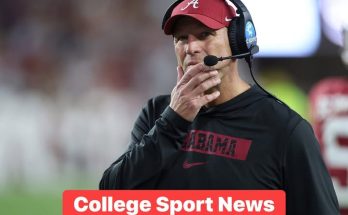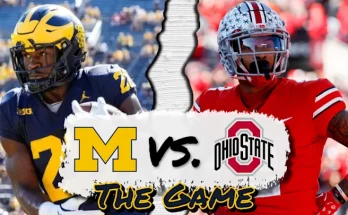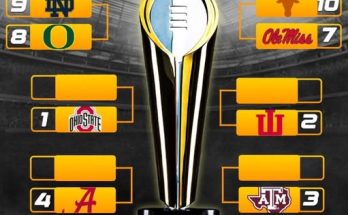In a move that reverberated throughout the NBA world and delivered a heavy blow to Indiana Pacers fans, team president Kevin Pritchard has officially confirmed that franchise cornerstone Tyrese Haliburton will not participate in the 2025–26 season. Haliburton, who suffered a devastating Achilles tear late last season, had been the subject of ongoing speculation regarding his rehabilitation timeline. While there had been faint optimism that the All-Star guard might return in the latter half of the upcoming campaign, Pritchard has now made it clear that the Pacers will take no chances with their franchise point guard’s long-term health. Instead, the organization is choosing the path of patience and prudence—one focused on ensuring Haliburton returns at full strength rather than risking his future with a rushed comeback.
For Indiana, this announcement changes the trajectory of their upcoming season before it even begins. Haliburton has become the heart and soul of the team, both as an on-court floor general and an off-court leader. Since arriving from Sacramento in the blockbuster trade involving Domantas Sabonis, the 24-year-old has rapidly evolved into one of the premier playmakers in the league. With his elite court vision, unselfish play, and improved scoring instincts, Haliburton had not only electrified Indiana’s offense but also restored relevance and hope to a fanbase that had grown weary of mediocrity. His absence will now force the Pacers to recalibrate their approach, leaning heavily on depth, youth, and internal development to stay competitive in a deep and unforgiving Eastern Conference.
Pritchard’s confirmation puts an end to months of hopeful rumors and internet buzz that Haliburton might beat the odds. Achilles injuries, especially for guards who rely on speed and lateral quickness, are among the most complex to recover from in professional sports. The injury not only impacts a player’s explosiveness but also requires significant mental resilience during rehabilitation. The Pacers are evidently taking cues from modern sports science, understanding that a conservative recovery window often yields a better long-term result than rushing a player back too soon. For Haliburton, the road ahead is grueling. Rehabilitation for Achilles tears typically stretches anywhere from nine to twelve months, and full recovery—both physically and psychologically—can take even longer.
The 2024–25 campaign was shaping up to be a breakout year for both Haliburton and the Pacers. He had just signed a five-year supermax extension and was coming off a season where he averaged over 20 points and 10 assists per game while earning All-NBA honors. He had blossomed into not just a statistical marvel, but a player capable of controlling the tempo, mood, and outcome of a game. Every highlight pass, each transition bucket, and every clutch moment solidified him as one of the league’s most unique young stars. His basketball IQ and ability to elevate his teammates were often compared to the great facilitators of generations past. For Indiana, he wasn’t just a building block—he was the building block.
Losing Haliburton for the entire 2025–26 season not only alters the team’s short-term aspirations but also changes the calculus in the front office. Pritchard and head coach Rick Carlisle will now need to reshape the rotation, likely giving more responsibility to young guards like Andrew Nembhard and Bennedict Mathurin. The team’s offensive system will have to adapt without its orchestrator. The ball movement, pick-and-roll precision, and three-point opportunities that Haliburton created with surgical efficiency will now need to be manufactured differently. That’s no easy task.
There’s also the matter of morale. Haliburton isn’t just the engine of Indiana’s offense—he’s the emotional lifeline of the team. His energy, charisma, and communication on and off the court have played a vital role in building chemistry within a youthful roster. His influence extended beyond statistics. Players fed off his enthusiasm, fans connected with his humility, and coaches lauded his professionalism. Losing that kind of presence for an entire year requires more than just tactical adjustments. It requires leadership from elsewhere in the locker room and a commitment from the entire roster to step up.
Still, there are opportunities hidden within this grim development. The Pacers will get a chance to evaluate the rest of their roster in high-pressure situations. Players who were perhaps slotted into complementary roles may now be tested in lead responsibilities. Nembhard, who has shown flashes of being a reliable playmaker, will likely assume more ball-handling duties. Mathurin, already a potent scorer, might get the green light to become more of a focal point on offense. Veteran addition Bruce Brown and sharpshooter Buddy Hield, if retained, will also need to be far more consistent in their contributions.
Furthermore, this could be a pivotal development season for Jarace Walker, the promising young forward with elite defensive tools. With Haliburton out, there may be greater emphasis on defense and half-court execution. Walker’s development could help the team find an identity rooted in grit, effort, and versatility. In the long run, the Pacers might emerge more balanced and resilient—especially once their star returns.
From a roster construction standpoint, Pritchard and his staff are now in an unenviable position. Do they pivot toward acquiring a veteran point guard on a short-term deal to stabilize the offense? Do they prioritize giving minutes to young players and treat this season as a developmental year? Could they explore trade possibilities that bring in talent aligned with Haliburton’s eventual return window? These are difficult questions, made all the more complicated by the delicate balance between staying competitive and being realistic.
There is also the issue of optics. Haliburton is the face of the franchise, and with that comes increased media scrutiny. The Pacers will need to manage the narrative carefully. They must communicate transparency about Haliburton’s progress while also shielding him from undue pressure. The timeline for Achilles recoveries varies based on individual physiology and work ethic, and while Haliburton is known for his tireless dedication, the organization would do well to stress patience rather than expectations.
This development also reopens broader conversations around the physical toll of modern NBA basketball. Haliburton had been playing heavy minutes and shouldering a major offensive burden before his injury. As the league grows faster, more physical, and increasingly demanding, injury management has become a strategic cornerstone. Teams are now investing more in performance science and load management strategies. Haliburton’s injury serves as a stark reminder that even the brightest stars are vulnerable, and that a sustainable future often requires short-term sacrifice.
On a personal level, Haliburton’s journey back will be one of the most closely watched stories in the NBA. He’s earned a reputation not just as a rising star, but as a student of the game. Those close to him describe an insatiable hunger for improvement and a humility that’s rare among elite athletes. There is no doubt he’ll attack rehab with the same intensity he applies on the court. The question isn’t whether he’ll come back—the question is how high his ceiling will be once he does. If past examples like Kevin Durant are any indicator, a successful return from an Achilles injury is possible. But it requires trust, patience, and an unbreakable mental resolve.
In many ways, this forced hiatus may deepen Haliburton’s appreciation for the game. It might expand his perspective, allowing him to study from the sidelines, mentor teammates, and come back with a renewed understanding of how to manipulate defenses, lead more vocally, and elevate his leadership. Great players often use adversity as fuel. Haliburton seems wired for that exact kind of growth.
For the Pacers organization, this is undoubtedly a setback. But it’s also a moment to double down on their belief system. The team has built a strong developmental pipeline, made smart draft choices, and cultivated a culture of accountability and growth. If they can weather this storm, they’ll be better positioned for a sustained run once Haliburton returns. In an NBA increasingly dominated by star duos and trios, the Pacers are betting that a healthy Tyrese Haliburton, surrounded by a deep, well-developed roster, will be enough to eventually contend.
Until then, the franchise, its fans, and its players will have to navigate unfamiliar terrain. The path forward won’t be easy, and the season ahead may be filled with challenges. But the clarity provided by Pritchard’s announcement offers one thing: a blueprint. One year to develop. One year to grow. One year to prepare for the return of a star whose light, though temporarily dimmed, is far from extinguished.



